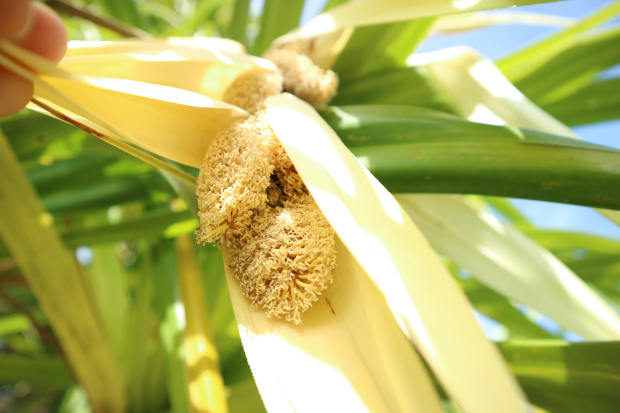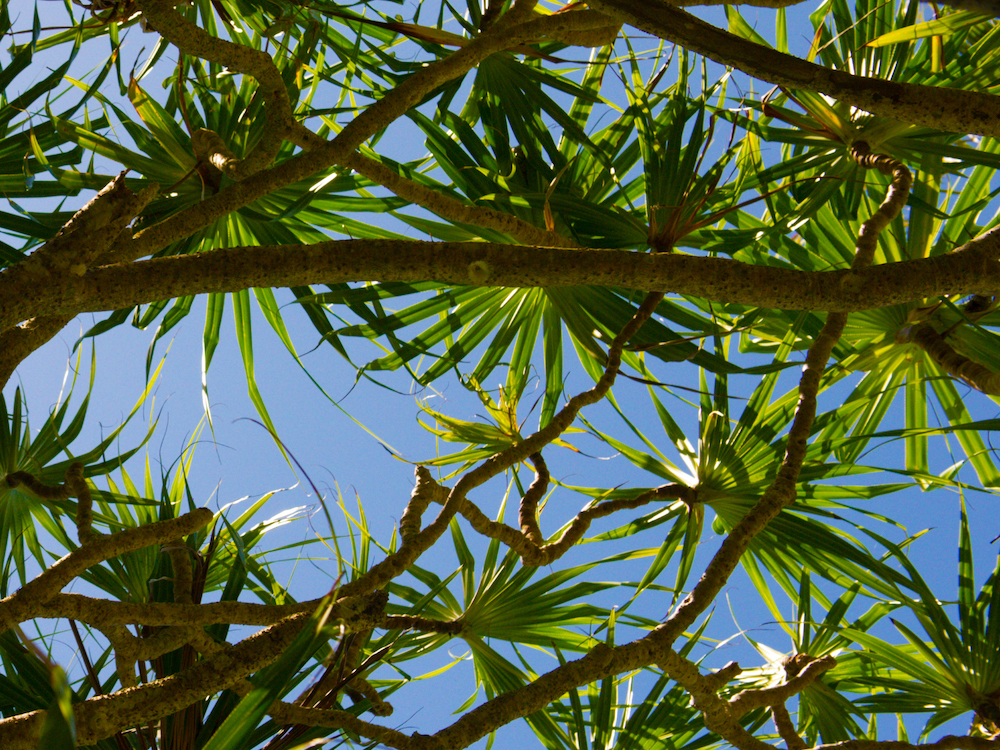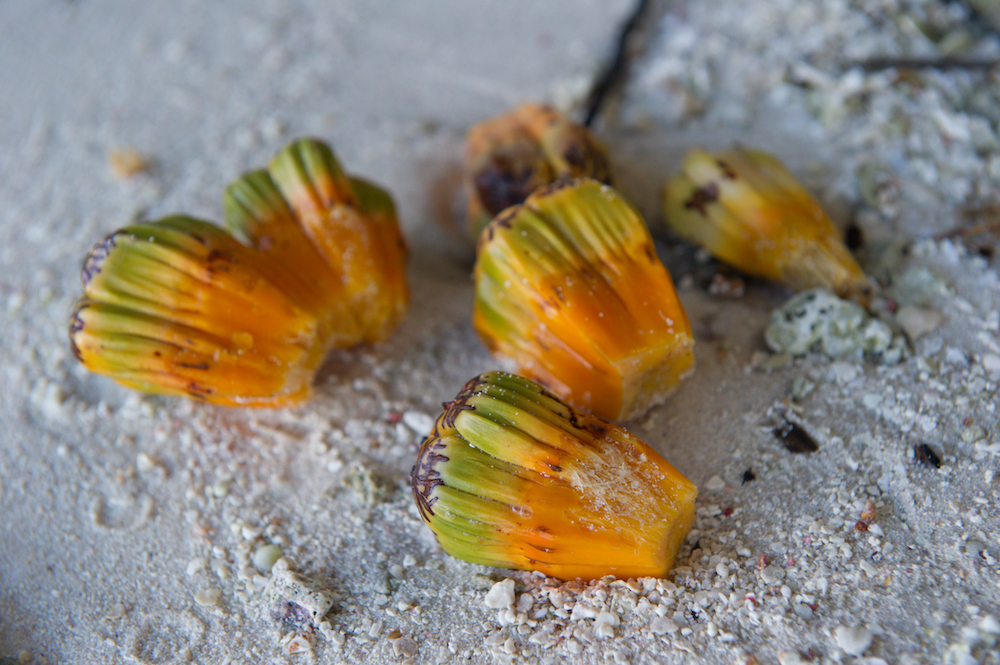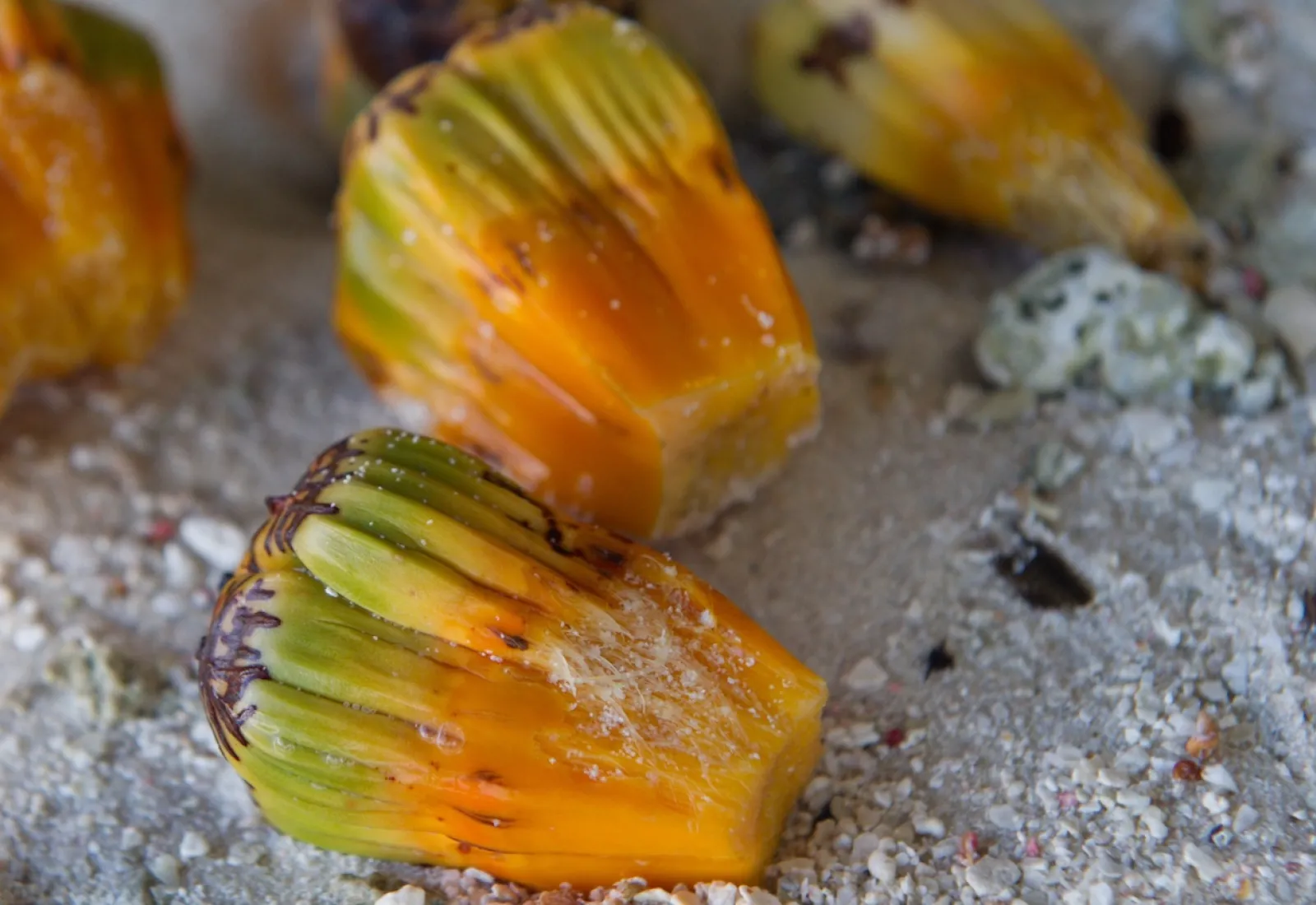Pandanus thrives in a beach habitat
There are many species of Pandanus across Asia and the Pacific, but Pandanus tectorius, is the most common and useful of all of the species in French Polynesia.
Pandanus is a monocot and as such the trunk is cylindrical and of equal thickness from the base to the top. It is supported by aerial roots that sprout above ground and form a pyramid under the trunk.
The leaves, nested spirally, form a bouquet at the end of the branches. Pandanus is dioecious so there are both male and female plants. The male plants have flowers surrounded by very fragrant white bracts that protect an oval panicle covered with pollen.
In Tahitian the flower is called a “hinano”. The flowers of the female plants produce a large segmented oval fruit which, although unrelated, resembles a pineapple. As they mature the segments turn orange-red, separate, and fall to the ground.

Fara flower
Pandanus is present in all the islands of Polynesia, from the shoreline to about 800 meters of altitude. However most of those upland were planted since the favored habitat is the shoreline where its roots are happy being washed by sea water. Natural dispersion is accomplished by floating seeds which are impermeable, can float for a long time and then sprout when they wash up on a beach thanks to the reserves they contain.
In Tetiaroa, as on most atolls it is well established along beaches and across the motu. The Brando Resort has also used this beautiful native plant as an integral part of the landscaping.


Not long ago, people from atolls were still eating pandanus fruits. As much as taro, uru, sweet potato for high islanders, pandanus fruits were a culinary staple for those living on atolls. They were consumed after being cooked, and the pulp of the fruit was mixed with grated coconut to make a type of bread that was dried in the sun.
The fruit segments are also used for making leis. In the Marquesas Islands, drupes of the haa kua variety were reserved for the making leis that were given to the tiki sacred wooden sculpture, representing a man on whom the spirit of an ancestor could descend. Marquesan women used the fragrant hinano to make their monoi massage oil.
There are also a variety of medicinal uses in traditional Polynesian healing. The roots are used especially as an ingredient in the treatment of upset stomach, cholic, and rheumatism.

Pandanus drupes


